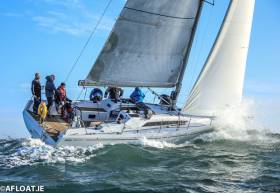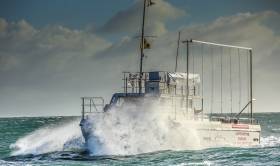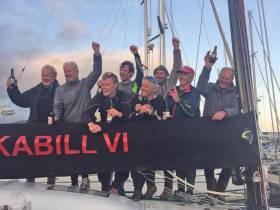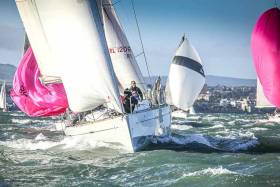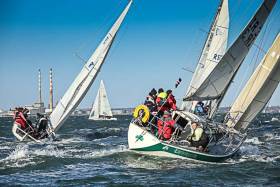Displaying items by tag: Turkey shoot
The 75-boat DBSC Turkey Shoot fleet sponsored by Citroen had the perfect package of sun, sea and wind for its third race on Dublin Bay this morning.
A southerly breeze of 15 to 20–knots which produced a big chop, were ideal sailing conditions as the seven race series approaches its halfway stage with a record turnout.
But it's not just numbers that are making this an impressive fleet, there's some great depth of quality too. The J109 National Champion Juggerknot is competing and the J109 runner-up White Mischief is also racing. Former ICRA Yacht of the Year, Class Zero's Farr 42 Wow (George Sisk) is competing and there is a buoyant fleet of sportsboats to eclipse summer turnouts.
Racing over an excellent course from Dun Laoghaire harbour mouth, a mixed fleet of cruisers and sportsboats raced to a laid turning mark before a short fetch, another mark and a second beat south across Scotsman's Bay in an ebb tide to the Muglins Rock before a long reach back home to a finish off the West Pier.
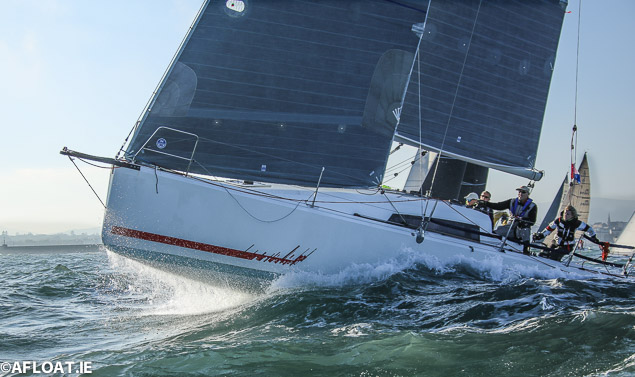 Overall leader after two races sailed: John O'Gorman's Hot Cookie, a Sunfast 3600 Photo: Afloat.ie
Overall leader after two races sailed: John O'Gorman's Hot Cookie, a Sunfast 3600 Photo: Afloat.ie
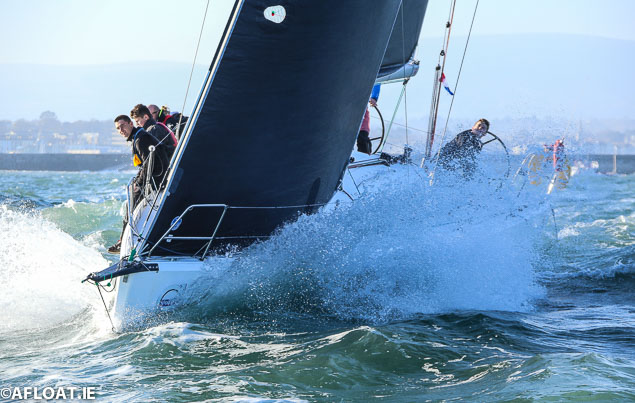 The Sunfast 3600 sistership Yoyo is also making waves under skipper Brendan Coghlan Photo: Afloat.ie
The Sunfast 3600 sistership Yoyo is also making waves under skipper Brendan Coghlan Photo: Afloat.ie
Going into the third race, the John O'Gorman skippered Sunfast 3600, (with Flying fifteen ace Ian Matthews steering) had a one-point lead over the Royal Irish Yacht Club J/109, Jump the Gun. Third is 2017 Turkey Shoot winner, the Beneteau 50 Mermaid IV.
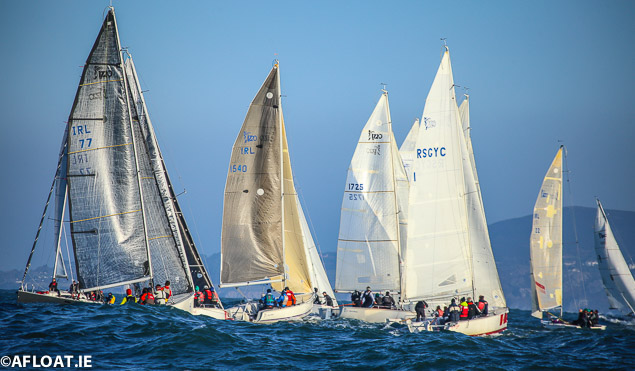 A great turnout of sports boats prepare for a pin end start in race three of the DBSC Turkey Shoot Photo: Afloat.ie
A great turnout of sports boats prepare for a pin end start in race three of the DBSC Turkey Shoot Photo: Afloat.ie
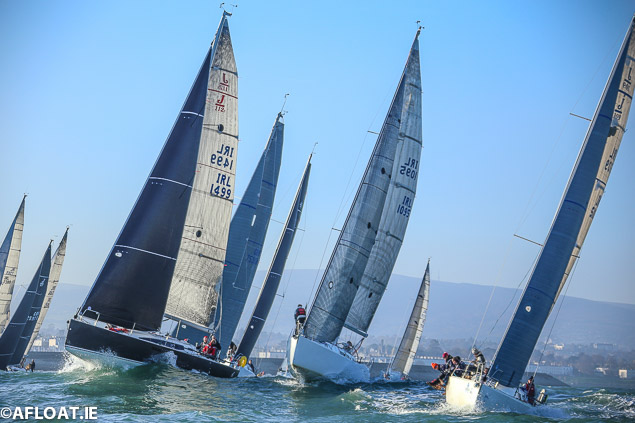 (Above and below) Big seas for the Turkey Shoot Big boat start Photo: Afloat.ie
(Above and below) Big seas for the Turkey Shoot Big boat start Photo: Afloat.ie
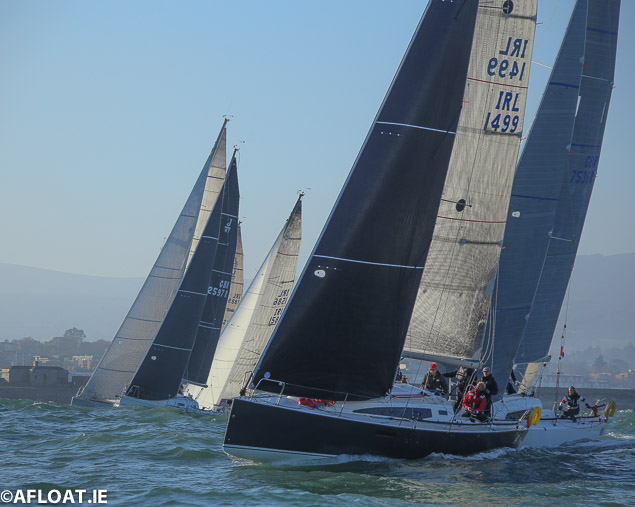
One of the new arrivals to the Bay and debuting at this series is a new Grand Soleil 34 'JustTina'. For race three, she had North Sails tactician Maurice O'Connell onboard, a sailor who has had the Midas touch in this series so far having sailed the early leader J109 White Mischief in race one and then been on Hot Cookie as tactician in race two last weekend to edge the Sunfast into the overall lead.
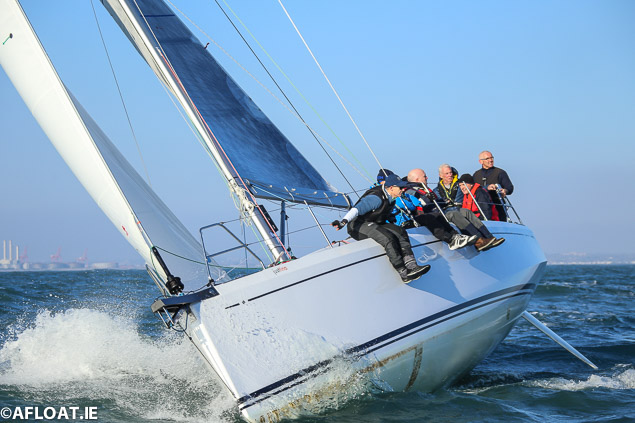 New arrival the new Grand Soleil 34, Just Tina Photo: Afloat.ie
New arrival the new Grand Soleil 34, Just Tina Photo: Afloat.ie
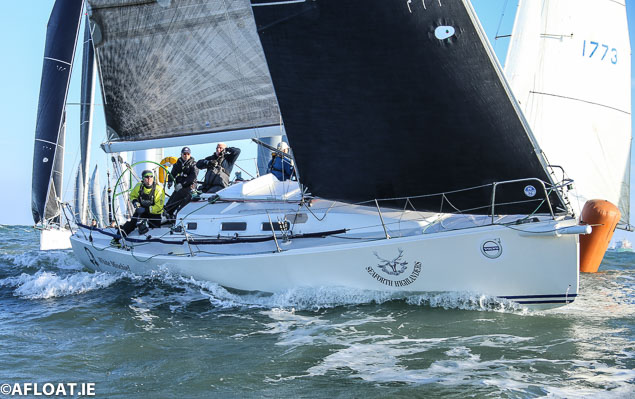 Early leader: J109 White Mischief (Tim and Richard Goodbody) Photo: Afloat.ie
Early leader: J109 White Mischief (Tim and Richard Goodbody) Photo: Afloat.ie
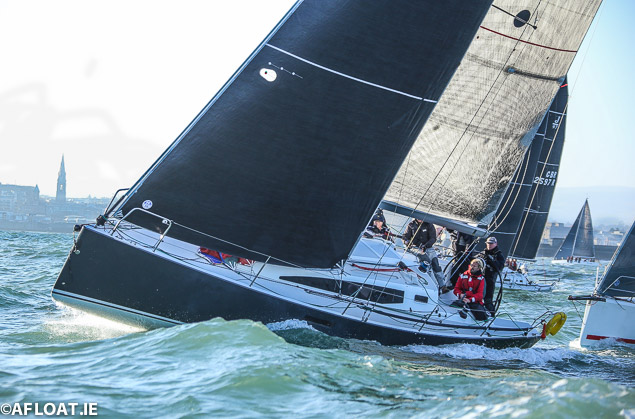 Morgan Crowe's distinctive black hulled J122 Jib and Tonic Photo: Afloat.ie
Morgan Crowe's distinctive black hulled J122 Jib and Tonic Photo: Afloat.ie
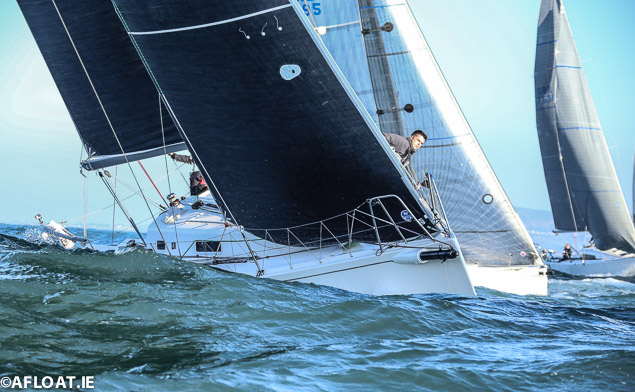 The J97 Windjammer (Lindsay J. Casey & Denis Power) Photo: Afloat.ie
The J97 Windjammer (Lindsay J. Casey & Denis Power) Photo: Afloat.ie
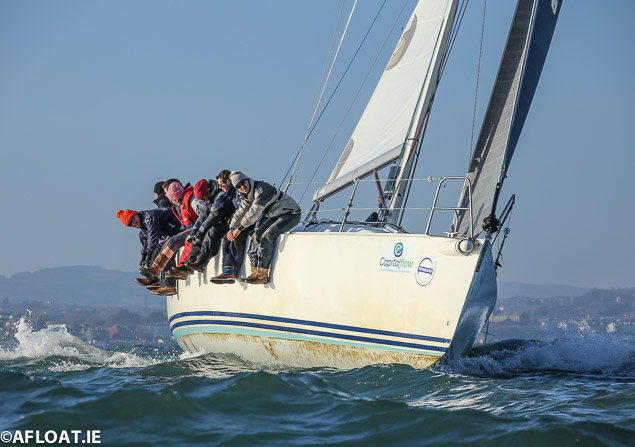
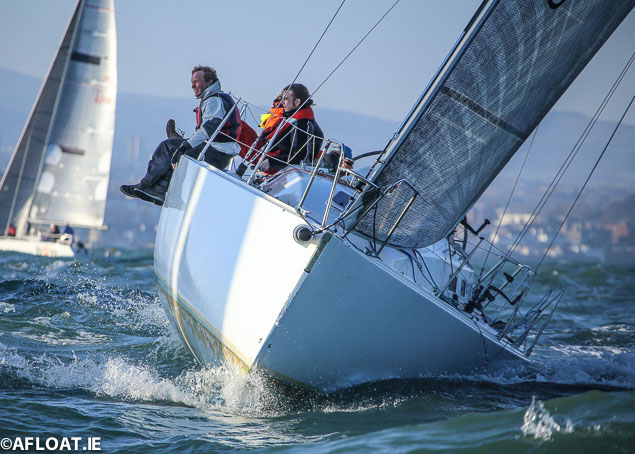
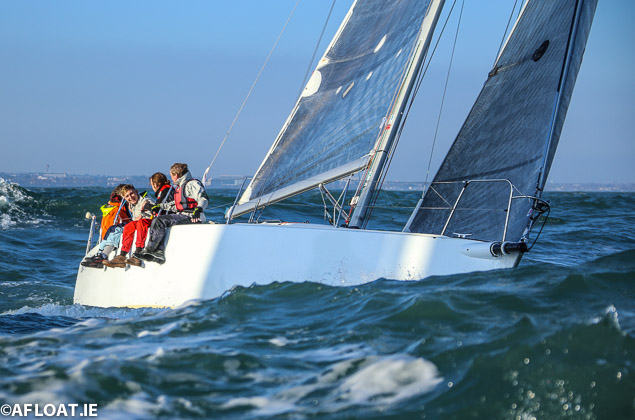
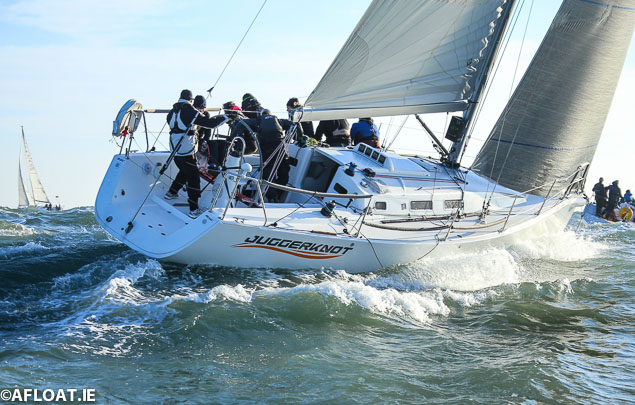
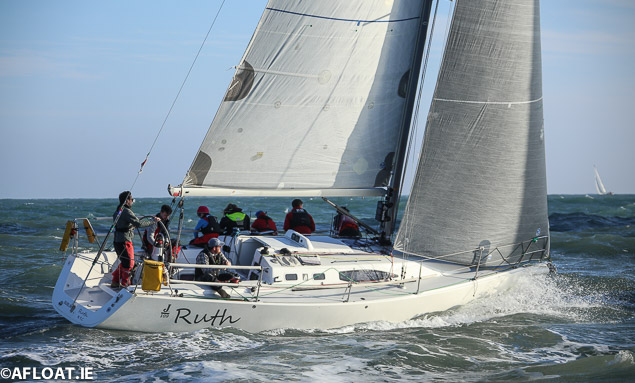

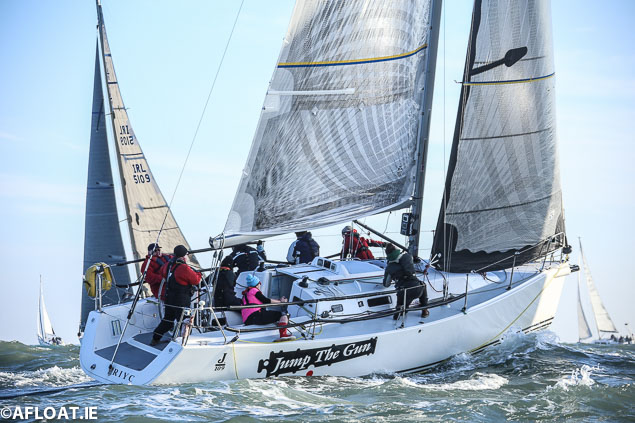
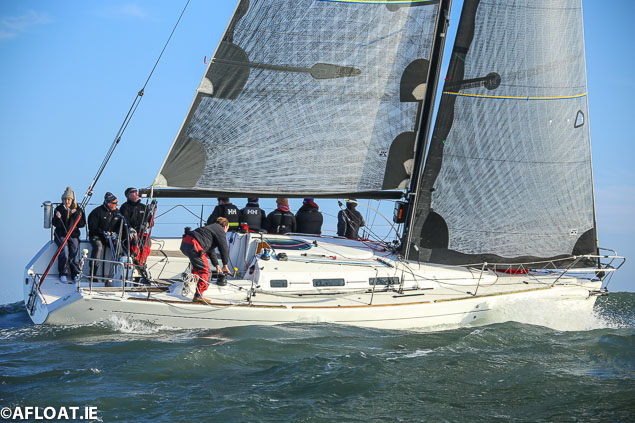
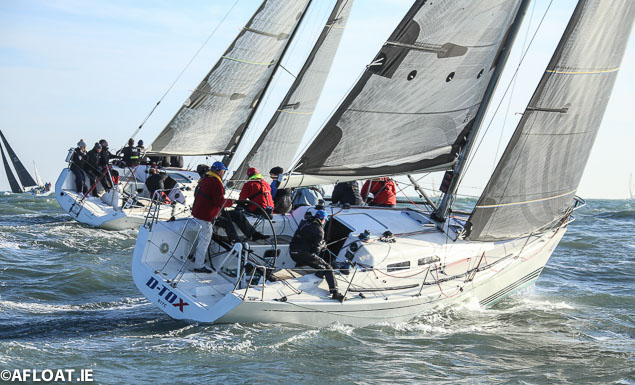
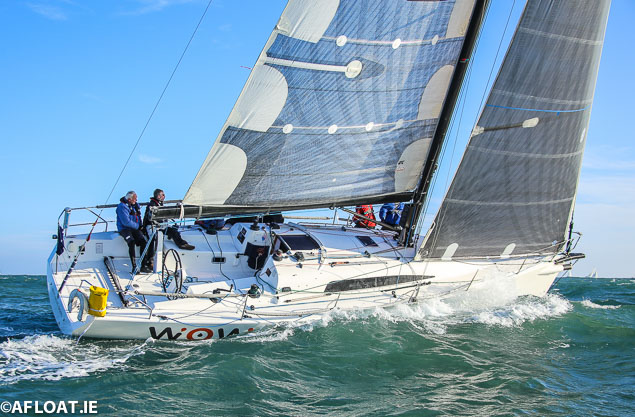


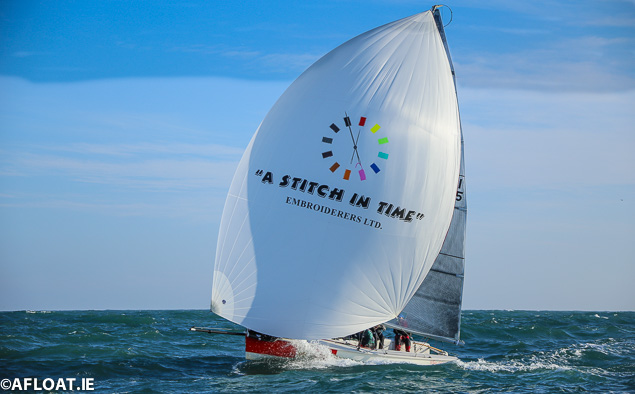
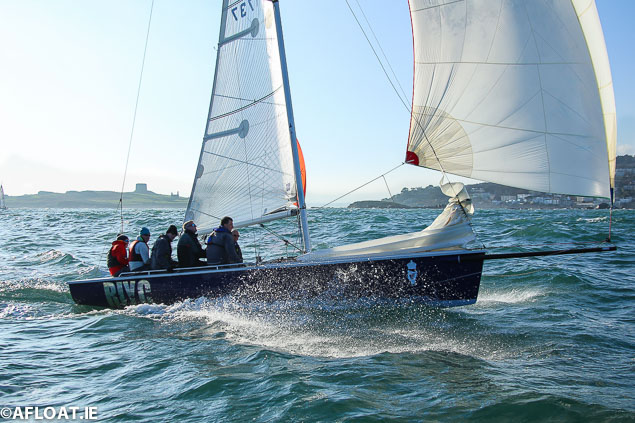
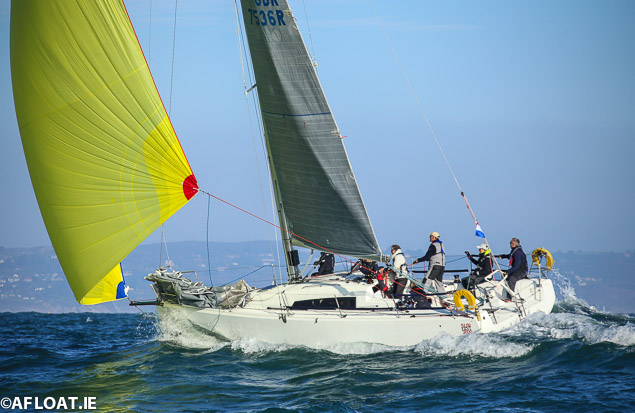
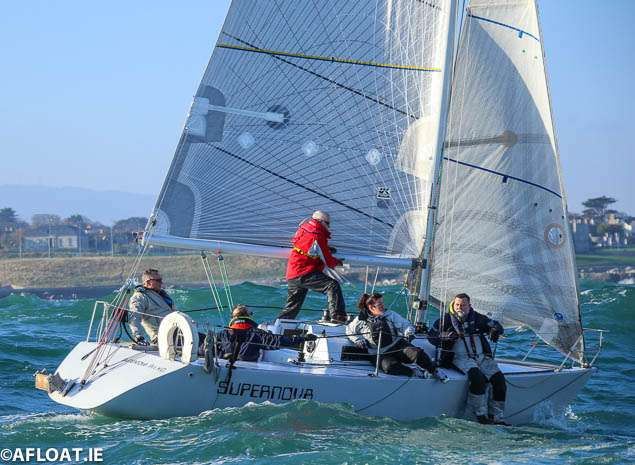
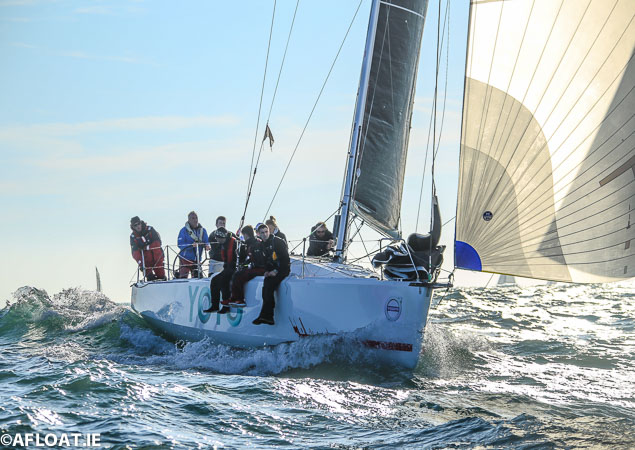
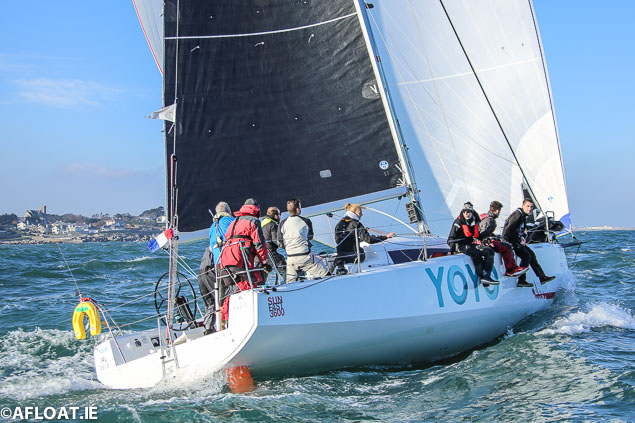
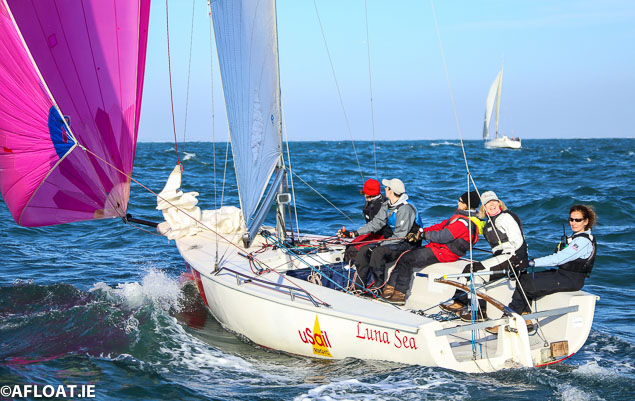
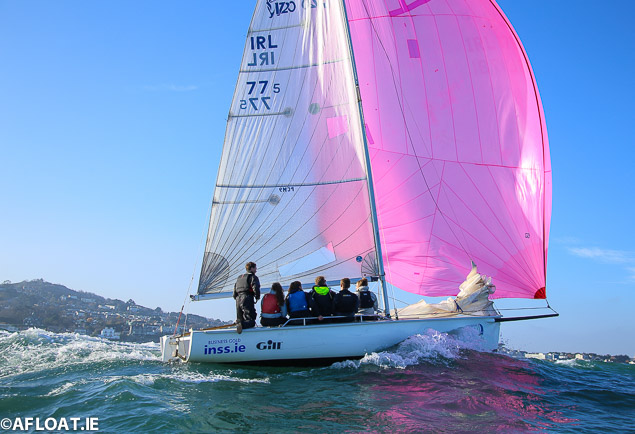



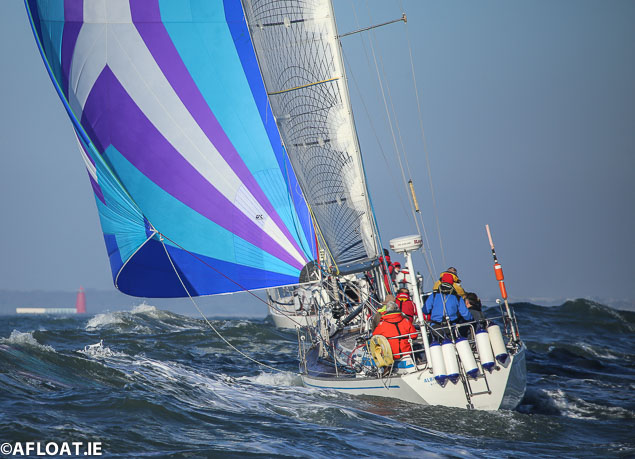
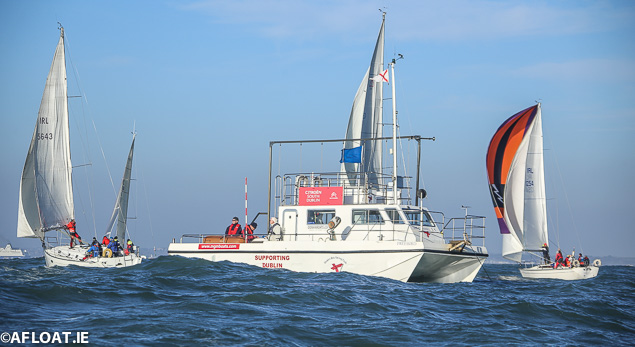
Sunfast 3600 'Hot Cookie' Leads DBSC Turkey Shoot After Two Races Sailed
After two races of the DBSC Turkey Shoot Series, it is Dublin Bay newcomer 'Hot Cookie' that that leads the 72–boat fleet in the pre-Christmas seven–race fixture sponsored by Citroen.
The John O'Gorman skippered Sunfast 3600, that will collect the best new boat performance at the DBSC Summer prizegiving this Friday evening, has a one-point lead over the Royal Irish Yacht Club J/109, Jump the Gun. Third is 2017 Turkey Shoot winner, the Beneteau 50 Mermaid IV.
Download overall results below
Last Sunday's turnout incorporated an on the water Commemoration for DBSC members killed in World War One and it was a bumper affair. The later start to facilitate Armistice Day meant both the in–harbour DMYC Frostbites, with an estimated 91 dinghies competing, plus the strong Turkey Shoot Cruisers out in the Bay produced a combined sailing fleet to rival any Summer Saturday.
 Up to 150 boats were sailing last Sunday with a rainbow to momentarily delineate dinghy and cruiser fleets on Dublin Bay: dinghies on the left inside Dun Laoghaire Harbour and Turkey Shoot competitors on the right Photo: Afloat.ie
Up to 150 boats were sailing last Sunday with a rainbow to momentarily delineate dinghy and cruiser fleets on Dublin Bay: dinghies on the left inside Dun Laoghaire Harbour and Turkey Shoot competitors on the right Photo: Afloat.ie
Goodbody's J109 White Mischief Leads DBSC Turkey Shoot
Tim and Richard Goodbody's potent J109 White Mischief leads after the first race of seven in the DBSC Turkey Shoot on Dublin Bay last Sunday.
A bumper turnout of 61 boats from 74–entries received to date is a shot in the arm for sailing in the capital's waters this winter.
A light air start to the series saw the Royal Irish Yacht Club entry come in ahead of clubmate Andrew Alego's Juggerknot, the current J109 National Champion.
Goodbody's White Mischief was helmed by Maurice O'Connell of North Sails Ireland.
Third overall is another RIYC boat, Leslie Parnell's Beneteau 34.7 Black Velvet.
The fleet includes a great turnout of 1720 sportsboats from across the Dun Laoghaire waterfront and includes a new Grand Soleil model Justina that finished 25th in her debut race.
Full results for the Citroen Sponsored Winter Series are downloadable below
DBSC Turkey Shoot Sailing Instructions are Published HERE!
With two days to go to the DBSC Turkey Shoot on Dublin Bay, organisers have issued Sailing Instructions (and an amendment) for the seven race series.
Download the Sailing Instructions below
Start sequences for Sunday's first race in the Citroen sponsored handicap series are expected to be issued later today as late entries continue to be received for the much-anticipated bumper series.
Further to the issue of the Sailing Instructions yesterday, an amendment to 'SI 12 TIME LIMIT' has been made: Change date 4th November to read 11th November.
One Week to DBSC 'Turkey Shoot' Sailing Series on Dublin Bay
With a week to go to the Citroen sponsored DBSC Turkey Shoot on November 4th, DBSC has issued a reminder to competitors for the seven race pre Christmas event.
As Afloat.ie reported yesterday, the National Yacht Club's Women On Water are ready for the Winter Turkey Shoot Challenge
A notice of race and entry form are on Afloat's earlier 2018 Turkey Shoot story here.
Beneteau 50 Mermaid IV Sails to Success in DBSC Turkey Shoot 2017
Mermaid IV, a Beneteau 50, one of the biggest yachts in the 73–boat Rathfarnham Ford DBSC Turkey Shoot, held on to her overall lead in the predominantly heavy weather series to clinch the Christmas Turkey First Prize at the Royal Irish Yacht Club on Sunday.
Mermaid, skippered by Seamus Fitzpatrick of the RIYC, took the overall lead in the series after four races sailed and held it til yesterday's seventh race conclusion.
Download results below.
Beneteau 50 Mermaid Extends Overall Lead at DBSC Turkey Shoot Series
Mermaid IV, a Beneteau 50, one of the biggest yachts in the 73–boat Rathfarnham Ford DBSC Turkey Shoot, has increased her overall lead of the series after five races sailed and one discard applied. Download results below.
Mermaid IV is now on 43 nett points, 11 points ahead of second placed Dear Prudence, a J109 type, on 54 points in the all–in cruiser–racer series.
Third place is another J109 White Mischief on 55–points.
The event has 73 registered entries this year with a 59–boat turnout last Sunday.
Race six takes place this Sunday.
Paul O’Higgins (RIYC) is November’s Afloat.ie “Sailor of the Month (Offshore)” for the sporting way he campaigns his JPK 10.80 Rockabill VI.
He knew when to make it serious to win the Volvo Dun Laoghaire to Dingle Race, but equally he won his class in Calves Week as part of a family holiday.
And he gallantly campaigns the DBSC Turkey Shoot as a front runner on the water, but carrying a stratospheric handicap.
Mermaid IV Moves Into The Lead of DBSC's Turkey Shoot
Mermaid IV, a Beneteau 50, one of the biggest yachts in the 46–boat Rathfarnham Ford DBSC Turkey Shoot has moved into the overall lead of the series after four races sailed and one discard applied.
News of the Modified ECHO gain for the fifty–footer came with last night's publication of the overall hanidcap results that shows Mermaid IV on 27 points and a tie for second place at the popular all–in cruiser–racer series.
The event has 73 registered entries this year with a 59–boat turnout last Sunday.
A Beneteau 31.7, Camira and one time overall leader Dear Prudence, a J109 type, share second place on 34 points.
Download results below.
Race five starts on Sunday morning. There are three races left to sail with the final round of the series due on December 17th.
One More Race Secures DBSC Turkey Shoot Discard
With three races down and four races to go the DBSC Turkey Shoot Series sponsored by Rathfarnham Ford will be hoping to dodge a low that threatens racing this Sunday.
As Afloat.ie reported earlier in the week, J109s have a strong hold on the 46–boat fleet taking the top three positions. One more race will see a discard applied.
Handicaps and starts for the weekend race are attached below.


























